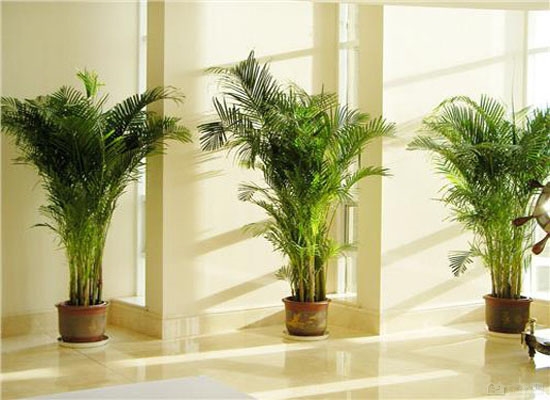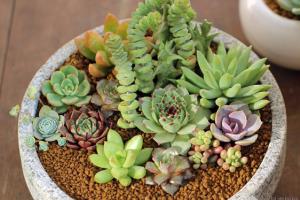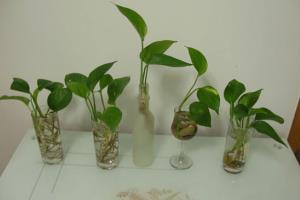Is the beautiful foliage plant sunflower poisonous?
Loose-tailed sunflower is more common in indoor display, its beautiful shape, evergreen leaves, used to decorate the home can bring fresh feeling. But is sunflower poisonous? Is it suitable for indoor planting? To answer these questions, you might as well first understand the life habits and breeding methods of sunflower.

Loose-tailed sunflower family belongs to Palmaceae, loose-tailed sunflower genus, alias yellow coconut, Phoenix tail bamboo, origin of Madagascar, Africa.
1. Morphological characteristics
Evergreen shrubs or small trees. The plant is 3-8 meters high, clustered, with more tillers at the base. The stem is smooth, yellowish green, with obvious leaf scars, like bamboo knots. Pinnately compound, smooth and slender, petiole tail slightly curved, bright green. Leaflets linear or lanceolate, about 30 cm long and 1 mm 2 m wide. The fruit is purple and black. The common ornamental species of the same genus are C.cabadae, which is 10 meters high, the stem is slender, the base is expanded, the leaves are arranged alternately, the leaflets are slender, bright green, and the fruit is small and red.
Second, habits
Like warm, humid and semi-overcast environment. Afraid of cold, afraid of strong light exposure, the requirements of the soil are not strict, but it is appropriate to loose and humus-rich soil.
III. Maintenance
Loose-tailed sunflower is afraid of cold and strong light exposure to avoid burning leaves. Loose-tailed sunflower prefers a semi-overcast environment, and about 50% of the sun should be covered in spring, summer and autumn. The suitable temperature for growth is 20-25 ℃. The temperature should be above 15 ℃ at night in winter and about 25 ℃ in daytime. If it is less than 5 ℃ for a long time, it is bound to suffer frost injury or even death. In the growing season, it is necessary to keep the basin soil moist and the high air humidity around the plant. Keep the leaf surface clean in winter, but often spray a small amount of water or scrub the leaf surface. Fertilize once or twice a month during the growing season. The requirement of soil is not strict, but it is suitable to be loose and rich in humus. Potted sunflower can be prepared with rotten leaf soil, peat soil plus 1 to 3 river sand or perlite and base fertilizer to prepare culture soil. Change the basin every 2 ~ 3 years in spring and apply base fertilizer. When changing pots, the withered branches and leaves should be removed, and the overdense clumps should be cut off according to the growth situation, so as to facilitate the germination of the clumps and maintain a beautiful potted posture.
IV. Diseases and insect pests
Leaf spot disease, leaf tip and leaf edge are the most vulnerable, resulting in dry curl, the initial stage of the disease with 50% carbendan wettable powder 500 times liquid spray control. In addition, it may be harmful to scale insects and can be sprayed with 1500 times of omethoate EC.
Loose-tailed sunflower is chic and beautiful in shape and shade-resistant. It can be displayed for a long time in bright rooms and can be placed continuously for 4-6 weeks in darker environments. It is a popular high-grade ornamental plant. In tropical courtyards, most ornamental trees are planted in grasslands, shade and houses; in the north, they are mainly used for potted plants, which are high-grade potted foliage plants decorating living rooms, dining rooms, conference rooms, family rooms, study rooms, bedrooms or balconies. Loose-tailed sunflower grows very slowly and is generally planted in medium and small pots.
Loose-tailed sunflower is poisonous, but there is no solid evidence at present. But sunflower, like many plants, can effectively remove volatile harmful substances such as benzene, trichloroethylene, formaldehyde and so on.
Related
- Wuhan Hospital Iron Tree Blooming Result Was Instantly Frightened by the Gardener Master
- Which variety of camellia is the most fragrant and best? Which one do you like best?
- What is the small blue coat, the breeding methods and matters needing attention of the succulent plant
- Dormancy time and maintenance management of succulent plants during dormancy
- Minas succulent how to raise, Minas succulent plant pictures
- What are the varieties of winter succulent plants
- How to raise succulent plants in twelve rolls? let's take a look at some experience of breeding twelve rolls.
- Attention should be paid to water control for succulent plants during dormant period (winter and summer)
- Watering experience of twelve rolls of succulent plants
- Techniques for fertilizing succulent plants. An article will let you know how to fertilize succulent plants.



